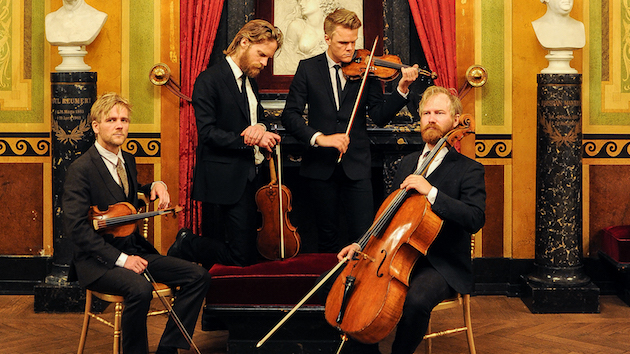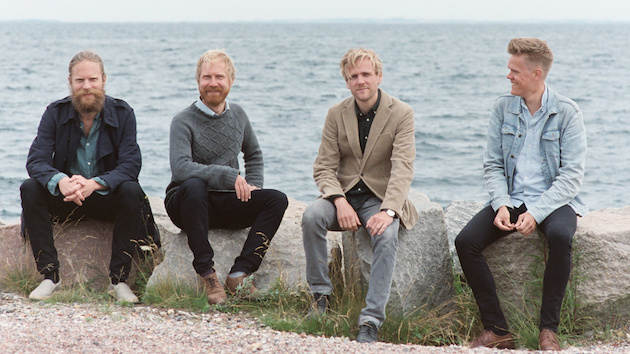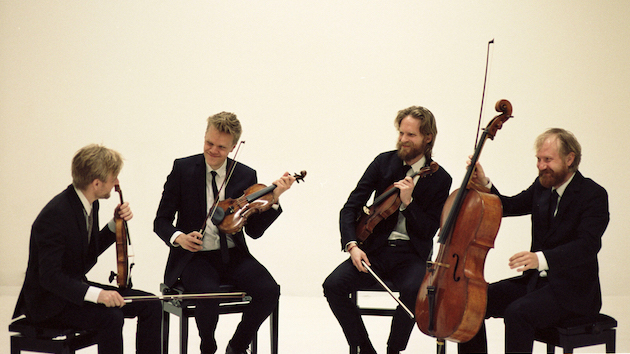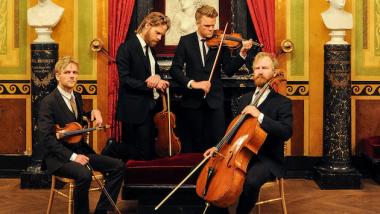
When a late Beethoven quartet is on the program, it’s usually saved for last. There’s always more to hear in a work like Op. 135, which the Danish Quartet played at UC Berkeley’s Hertz Hall on Sunday, and going in with warm ears helped.
Indeed, the Danish players (Frederik Øland and Rune Tonsgaard Sørensen, violins; Asbjørn Nørgaard, viola; and Fredrik Schøyen Sjölin, cello) played with both an eye for new emphases and a lot of heart. They brought out the beautiful intricacies of the slow movement, and heightened the drama of the interlude — “The Difficult Decision” — to the cheerful finale.
Gratifying as Beethoven’s music is on its own, it’s also fun to look for the signs of Haydn’s influence. You needn’t search hard. If the Beethoven work was the unofficial headliner of Sunday’s program, the revelation for me was the opener: Haydn’s Quartet in C Major, Op. 20 No. 2.
Last winter, when I first heard the Danish Quartet perform, I was struck by the virtuoso blending that characterized the group sound. It remains a truly special quality, one that particularly serves music like the opening Moderato here.

It’s often said that Haydn’s later quartets are increasingly egalitarian, and though the first violin still has the most to do here, the other instruments, when they join in, aren’t echoes, or low counterparts — with the Danish players, they really sound the same.
The viola and second violin occasionally take a turn at the continuo line, for example. On Sunday, they played with convincing weight, as if to imitate the cello — who, himself, rose from the harmonic foundation to play the melody in a way that melded with the first violin. In the finale, a fugue, each line was given equal importance — and yet all was so light, everything sounded with perfect clarity, like a tiny music box.
Fluid phrasing made the monumental slow movement — aptly named Capriccio — practically operatic. The sweetness of the arias made even more brusque the sudden take-offs of the dotted rhythms, played in striking unisons that linger on diminished harmonies.
From there, Danish eased into the Menuet — gingerly, at first, as if unsure whether the storm had passed. Once the music got going, it was merry — yet hints of the Capriccio tinged the trio with darkness. All this, from the man who was only just getting started with the string quartet.

On the other hand, Webern, finishing his single-movement String Quartet (M. 79) in 1905, hadn’t quite come into his own. In a brief and engaging speech, violist Nørgaard described the inner turmoil of a young composer obsessed with — and yet not quite comfortable with — the emerging 19th-century canon.
Webern, in fact, quotes the same Beethoven quartet: both explicitly, drawing from its melodies, and in smaller textural details, like the sudden prominences of the second violin.
Webern drew inspiration from a triptych of Alpine landscapes — a typically romantic subject, Nørgaard pointed out. Stylistically, though, the music lies somewhere between Schoenberg’s über-romantic, tension-maximizing Verklärte Nacht and the more tonally ambiguous Lyric Suite by Berg.
More than anything, the three-part work is full of distinct characters. It’s indecisive music, in a wonderful way. There’s thorny counterpoint, an expressionist’s fugue, and, once in a while, nervously passionate strains in fully-functioning harmony. The composer who hasn’t yet decided, it turns out, can do anything.




